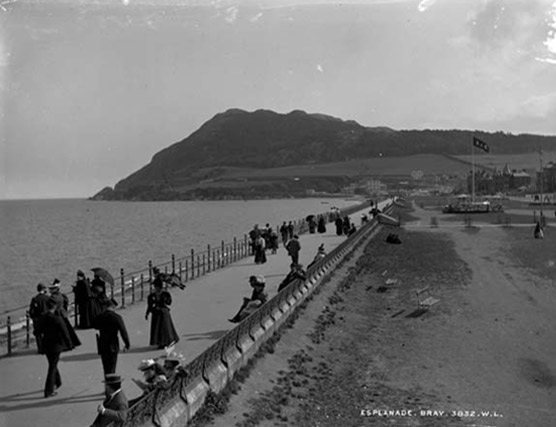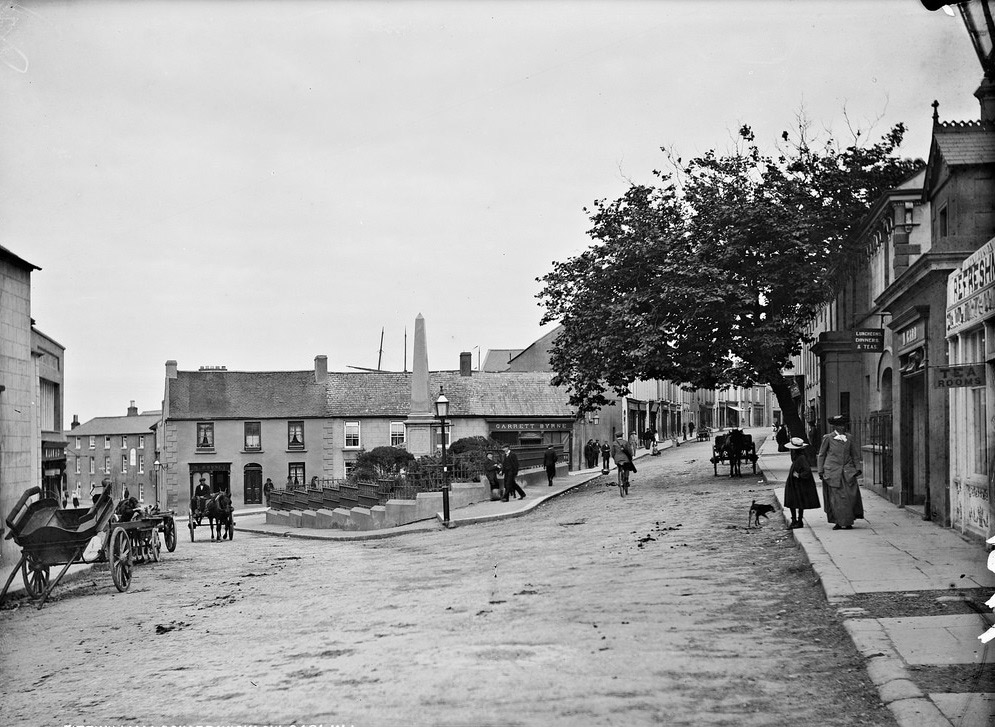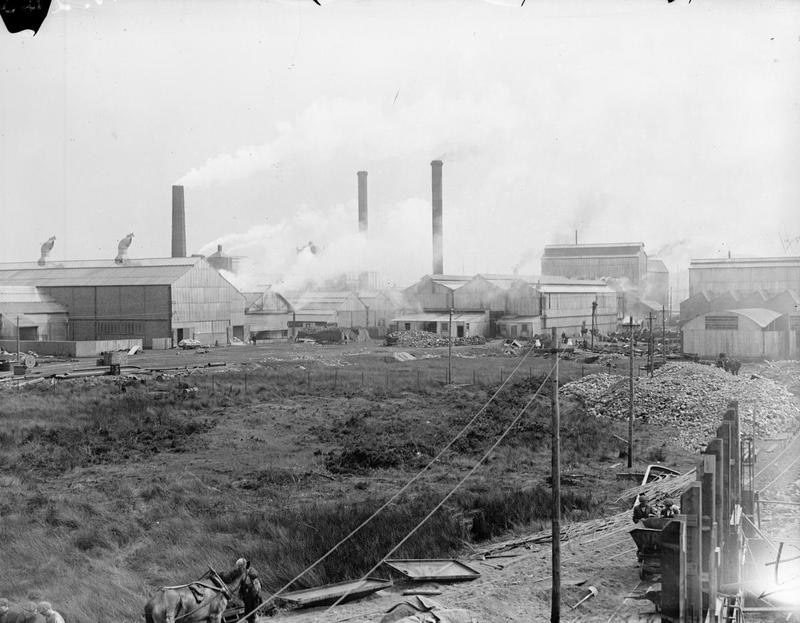
Bray
Bray had a population of 7,700 in 1911. It was in all respects a prosperous
seaside community hailed as the ‘Brighton of Ireland’. Since the 1850’s it had been transformed from a relatively small seaside village to a thriving Victorian resort due to its proximity to Dublin and the extension of the railway. Bray was heavily influenced by the location of Killruddery House and the largesse of the Brabazon family Earls of Meath who were benefactors throughout the town’s history. A favourite out of city location for wealthy Dublin society, the town population was deeply imbedded in United Kingdom values and this was to be reflected in recruitment and volunteering in the coming war. The presence of colourful military bands performing regularly in Bray, Greystones, and Wicklow, and their turnouts at various county events shouldn’t be underestimated as an inducement to recruiting to the military life.
Wicklow Town
Wicklow Town was the county administrative centre. It also had a strong maritime tradition and modern industry in the form of a fertiliser factory and packing plant. It was also the centre of a popular newspaper ‘The Wicklow Newsletter’. It was widely read and had a strong Unionist tinge to its editorials which influenced attitude in some sections of county society. The town’s military tradition was probably stronger than in any other part of the county and from Wicklow town the tendrils of military activity spread throughout the county through the presence of the Wicklow Garrison Artillery a militia regiment active since the early 19th century sponsored by the Royal Garrison Artillery of London that acted as training and recruiting medium for the regular army gunners. From all over the county and further afield the Wicklow Artillery held training and events that attracted hundreds of participants. As in Bray, generations of association with military personnel in the town and the presence of the local Artillery inculcated an ethos of military service in the armed forces both on land and sea.


Arklow
Since 1895 Arklow was the location of a major explosives works employing both men, and unusual for the time, a very significant number of women labourers. Exposure to the Boer War (1899 -1901) munitions needs had created an attitude that wars can be profitable. Because of its long maritime history harking back to the Napoleonic press gangs and the Crimean War supply runs, Arklow contributed a disproportionate amount of recruits into the Royal Navy and sailors to the British merchant marine. In 1912 the town was extremely prosperous. As it was on the railway route and had suitable hinterlands for that purpose Arklow was also a regular venue for military summer camps for the Dublin based British regiments on Irish tours of duty. As a result there was a familiarity with military presences in the area. Historically there were also a number of extended Anglo Irish families imbued with military and naval tradition in the British services.
